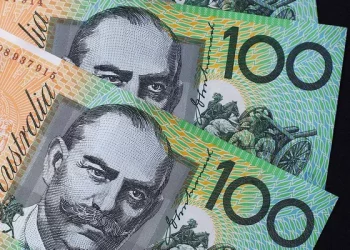The Canadian dollar (CAD), colloquially known as the “loonie,” is one of the most actively traded currencies in the world. Its performance against other major currencies is influenced by a combination of domestic and international factors. Understanding the forces driving the CAD’s strength is crucial for investors, businesses, and policymakers, as the currency’s value directly affects trade balances, inflation, and economic growth.
This article explores the fundamental and technical factors that influence the strength of the Canadian dollar, providing insights into how traders and analysts evaluate its movements.
1. The Role of Commodities in CAD Strength
Canada is one of the world’s leading exporters of commodities such as crude oil, natural gas, lumber, and minerals. Consequently, the performance of the CAD is closely tied to the prices of these commodities.
Crude Oil and Energy
Crude oil is Canada’s most significant export, making its price a major determinant of CAD strength. When oil prices rise, demand for Canadian exports increases, leading to higher inflows of foreign currency. This boosts the value of the CAD.
For instance, during periods of rising global oil prices, the CAD often appreciates against the US dollar (USD). Conversely, when oil prices fall, the Canadian economy faces lower export revenues, weakening the CAD.
Other Commodities
In addition to oil, Canada exports significant amounts of agricultural products, metals, and timber. Fluctuations in the prices of these commodities, driven by global demand and supply dynamics, can also affect the CAD.
Correlation with Risk Sentiment
Commodities are considered risk assets, meaning their demand typically increases during periods of global economic growth and decreases during downturns. As a result, the CAD often acts as a “risk-on” currency, strengthening during positive economic periods and weakening during uncertainty or recession.
2. Monetary Policy and Interest Rates
The Bank of Canada (BoC) plays a pivotal role in determining the strength of the CAD through its monetary policy decisions. By setting interest rates and conducting open market operations, the BoC influences economic activity, inflation, and exchange rates.
Interest Rate Differentials
One of the key factors driving the CAD is the interest rate differential between Canada and other countries, particularly the United States. Higher interest rates in Canada attract foreign investment in Canadian bonds and other assets, increasing demand for the CAD. Conversely, if Canadian rates are lower than those in the US, capital may flow out of Canada, weakening the CAD.
Inflation Targeting
The BoC aims to maintain inflation within a target range, typically 1–3%. When inflation rises above this range, the central bank may raise interest rates to curb spending, which can strengthen the CAD. Conversely, lower interest rates aimed at stimulating growth can reduce the currency’s value.
Forward Guidance
The BoC’s communication about future policy decisions, known as forward guidance, also impacts the CAD. Markets react to expectations of rate hikes or cuts, adjusting the currency’s value accordingly.
3. Economic Data and Indicators
A wide range of economic indicators provide insight into the health of the Canadian economy and its currency. Key metrics include:
Gross Domestic Product (GDP) Growth
Strong GDP growth signals a robust economy, attracting investment and strengthening the CAD. Weak growth or contraction, on the other hand, may lead to a depreciation.
Employment Data
High employment levels and job creation indicate economic strength, while rising unemployment suggests economic challenges. Employment reports are closely monitored by traders for clues about future economic performance and BoC policy actions.
Trade Balance
Canada’s trade balance, or the difference between its exports and imports, is another critical factor. A trade surplus (more exports than imports) supports the CAD by increasing foreign demand for Canadian goods and the currency. A trade deficit has the opposite effect.
Consumer and Business Confidence
Surveys measuring confidence levels provide insights into spending and investment trends. High confidence levels typically bolster the CAD, while low confidence can weaken it.
4. Global Economic Trends
Canada is a small, open economy, making it highly sensitive to global economic conditions. The following factors are particularly important:
US Economic Performance
The United States is Canada’s largest trading partner, accounting for roughly 75% of its exports. The strength of the US economy directly impacts Canadian exports and, by extension, the CAD. A strong US economy typically supports the CAD, while US downturns can weigh heavily on the currency.
China and Emerging Markets
Canada’s commodity exports are also influenced by demand from China and other emerging markets. Economic slowdowns in these regions can reduce demand for Canadian resources, weakening the CAD.
Global Risk Sentiment
During periods of geopolitical tension or economic uncertainty, investors tend to move capital into “safe-haven” currencies like the USD or Swiss franc, often at the expense of the CAD. Conversely, periods of stability and optimism support the CAD as investors seek higher returns in riskier assets.
5. Foreign Exchange Market Dynamics
The CAD’s value is also shaped by speculative activities and market sentiment. Traders in the forex market respond to news, data releases, and technical signals, creating short-term volatility.
Speculation and Hedging
Speculators bet on future currency movements, while businesses and investors hedge against currency risk. Both activities contribute to daily fluctuations in the CAD’s value.
Technical Analysis
Many forex traders use technical analysis to predict CAD movements. Trends, support and resistance levels, and momentum indicators can all impact trading decisions, influencing the currency’s value.
6. Government Fiscal Policy
Canada’s fiscal policy, including government spending and taxation, also influences the CAD. Expansionary policies, such as increased spending or tax cuts, can stimulate economic growth but may lead to higher debt levels, potentially weakening the currency. Conversely, fiscal discipline and surpluses can support a stronger CAD.
7. Political Stability and Governance
A stable political environment and strong institutions make Canada an attractive destination for investment, supporting the CAD. Political uncertainty, such as elections or contentious policy debates, can create temporary volatility.
8. Climate Change and Environmental Policies
Canada’s reliance on natural resources makes environmental policies increasingly relevant. Stricter regulations on fossil fuels or transitions toward renewable energy could impact the profitability of resource exports, influencing the CAD.
Strategies for Trading the CAD
Given the numerous factors influencing the CAD, traders employ various strategies to capitalize on its movements:
Carry Trades: Taking advantage of interest rate differentials by borrowing in low-yield currencies to invest in higher-yielding CAD assets.
Commodity-Based Trading: Monitoring oil prices and other commodity trends to anticipate CAD movements.
Economic Event Trading: Trading based on economic data releases, such as GDP reports or BoC announcements.
Risk-On/Risk-Off Strategies: Adjusting positions based on global risk sentiment and equity market performance.
Conclusion
The strength of the Canadian dollar is shaped by a complex interplay of domestic and global factors. From commodity prices and monetary policy to global economic trends and market sentiment, the CAD’s movements reflect the dynamic nature of the forex market. For traders and investors, staying informed about these determinants is essential to making sound decisions. As Canada continues to navigate global challenges and opportunities, the CAD will remain a bellwether of the country’s economic health and its position in the global economy.
Related Topics:

























